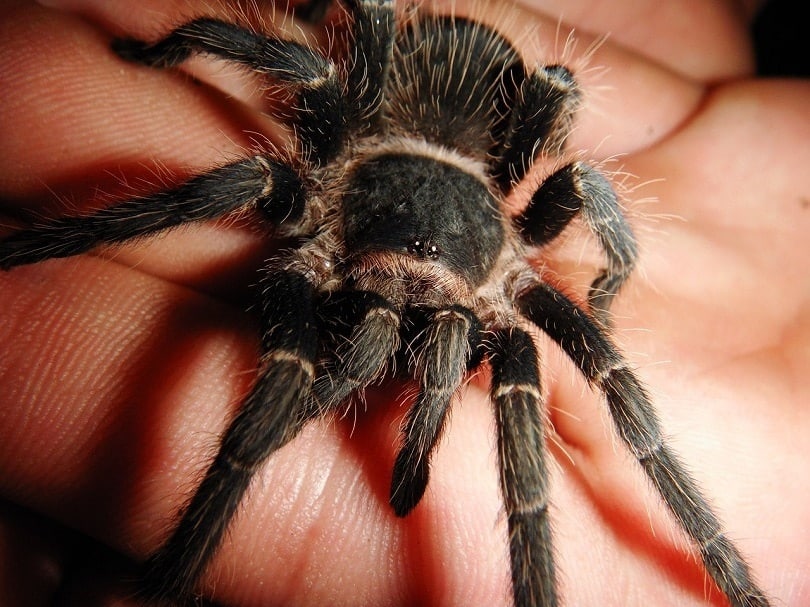Unless you are an arachnophile, you are likely not a fan of even the tiniest spiders living in the corners of your house. Those we typically see in our North American homes might be scary or venomous, but they are nowhere near the sizes that certain arachnids can reach.
We have compiled the largest 11 species of spiders globally, from South America to Sri Lanka. No, camel spiders did not make the list. They are a unique creature somewhere between a scorpion and a spider instead of an arachnid.
The 11 Largest Spider Species in the World
1. The Goliath Bird-Eating Tarantula (Theraphosa blondi)
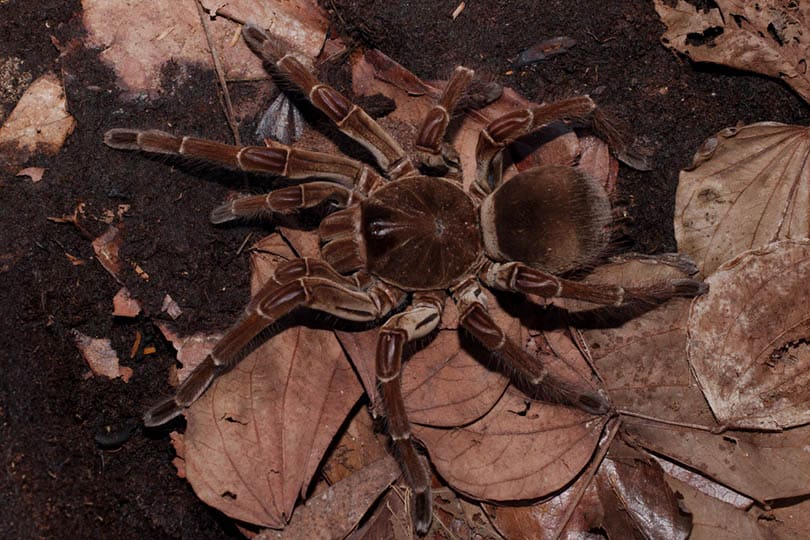
| Average leg span: | Up to 12 inches |
| Native region: | Amazon jungle; Suriname, Guyana, Venezuela, Brazil |
| Dangerous? | Not deadly but venomous and painful |
The Goliath Bird-Eating Tarantula is considered the most enormous spider in the world that we have discovered. Although plenty of spiders out there have deceiving names, this one truly does eat birds. Although it is rare, these tarantulas can ensnare small chicks and hummingbirds, along with anything else around the same size. These spiders are puppy-sized, weighing over 6 ounces each! Their combined weight and leg span gives them the distinction of the largest arachnid.
2. Giant Huntsman Spider (Heteropoda maxima)
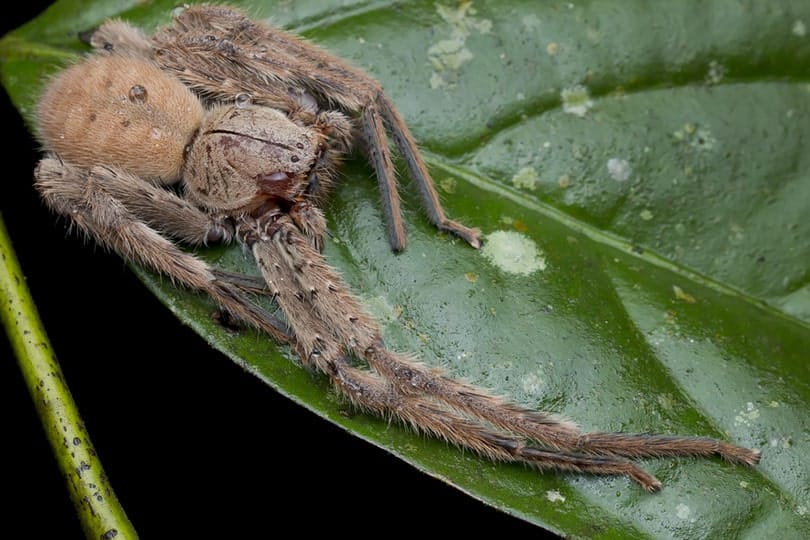
| Average leg span: | 11-12 inches |
| Native region: | Laos |
| Dangerous? | Not deadly but venomous and painful |
The Giant Huntsman spider weighs much less than their bird-eating cousin. These spiders are thought to be the largest if you measure their leg span. These spiders are not tarantulas, which in general, isn’t a good thing. Instead, they belong to the Huntsman family. They don’t build webs but instead, go out and attack their prey. Their body is only 2 inches long, but they are fast and aggressive. Luckily, they are quite rare and have only been seen in Laos outside caves.
3. Brazilian Salmon Pink Birdeater (Lasiodora parahybana)

| Average leg span: | 10-11 inches |
| Native region: | Eastern Brazil |
| Dangerous? | No |
Salmon Pink Birdeaters is one of the most popular tarantulas to keep as a pet. Although their native region is in Brazil, their popularity has dispersed them all over the world. They are part of the tarantula family and are not dangerous for humans. They are considered docile. Due to their dark color markings offset by pinkish hairs, they are deemed attractive spiders.
4. Brazilian Giant Tawny Red Tarantula (Lasiodora parahybana)

| Average leg span: | Just over 10 inches |
| Native region: | Brazil, Argentina, Paraguay, Uruguay |
| Dangerous? | No |
Another one of the world’s biggest spiders maintains a firm hold in the list of the most popular arachnid pets. These red tarantulas are quite docile and will only bite if they are handled too frequently. Even then, their venom is not that dangerous to humans. These soft-hearted spiders are even good mothers. Most spiders lay eggs and abandon them immediately afterward. Tawny Reds stay close, guard them, and even help the young to hatch.
5. Grammostola anthracina (Grammastola anthracina)
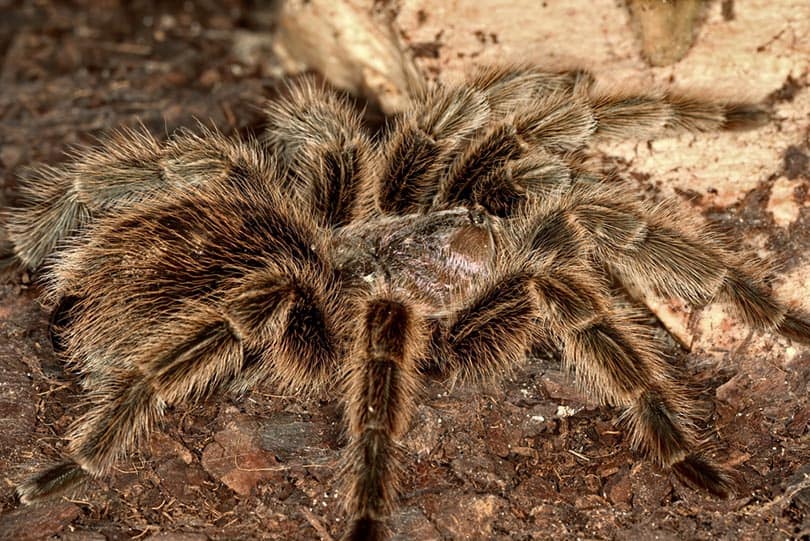
| Average leg span: | Just over 10 inches |
| Native region: | Brazil, Uruguay, Argentina, Paraguay |
| Dangerous? | No |
If you want to go on tarantula hunts for some of the world’s largest spiders, heading down to northern South America would be a promising adventure. Among the many species living there is the golden and furry Grammastola. These are popular pets that can grow slightly over 10 inches. They are docile and only get aggressive when kept hungry. They can live for up to 20 years, so prepare for a commitment upon adoption.
6. Peocilotheria Rajaei (Poecilotheria rajaei)

| Average leg span: | Just over 8 inches |
| Native region: | Sri Lanka |
| Dangerous? | Not much |
The Poecilotheria was only discovered in 2009 and as such, doesn’t have a widely recognized common name. Some people have taken to calling them the “Face-Sized Tarantula” for obvious reasons. So far, they have only been spotted in Sri Lanka. Their venom kills small lizards, rodents, and birds but doesn’t do much to humans. They are fairly rare and were only discovered due to deforestation driving them to take up residence in abandoned buildings.
7. Hercules Baboon Spider / King Baboon Spider (Pelinobius muticus)
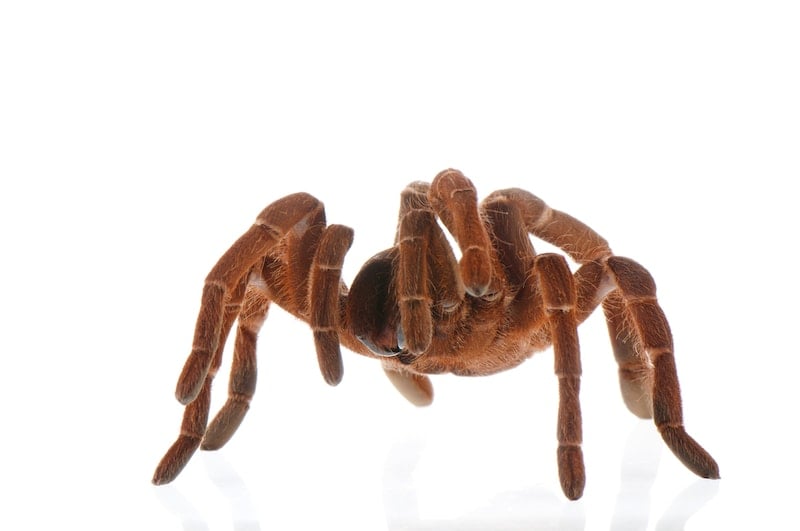
| Average leg span: | 8 inches |
| Native region: | Nigeria |
| Dangerous? | Yes, venomous and aggressive |
The Hercules Baboon Spider may or may not be extinct. A specimen was discovered more than 100 years ago, and their remains rest in the Natural History Museum in London. Another one of these Herculean spiders hasn’t been found since, but that doesn’t mean they aren’t out there. They got their name from the resemblance between their legs and the fingers of a baboon. The King Baboon Spider still lives in East Africa and is happy to bite with a potent venom.
8. Colombian Giant Tarantula (Megaphobema robustum)
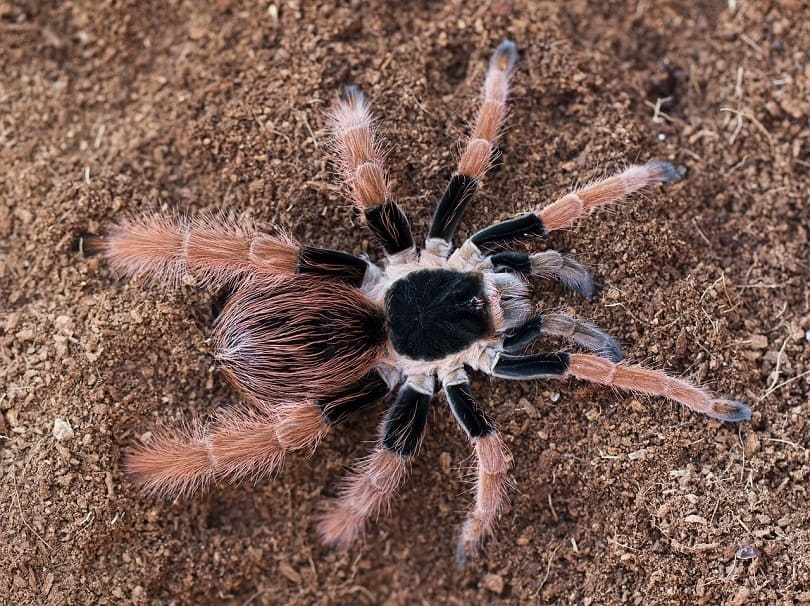
| Average leg span: | 6-8 inches |
| Native region: | Brazil and Colombia |
| Dangerous? | Aggressive but not deadly |
The Colombian Giant Tarantula can also be called the Colombian Giant Redleg. They eat all kinds of pests, like large insects, rodents, and lizards. Although they are quite attractive spiders and are still popular pets, they are known for having an aggressive temperament. The bite can sting but isn’t dangerous. However, they also tend to strike at you with spiked back legs
9. Chaco Golden Knee Tarantula (Grammastola pulshcripes)
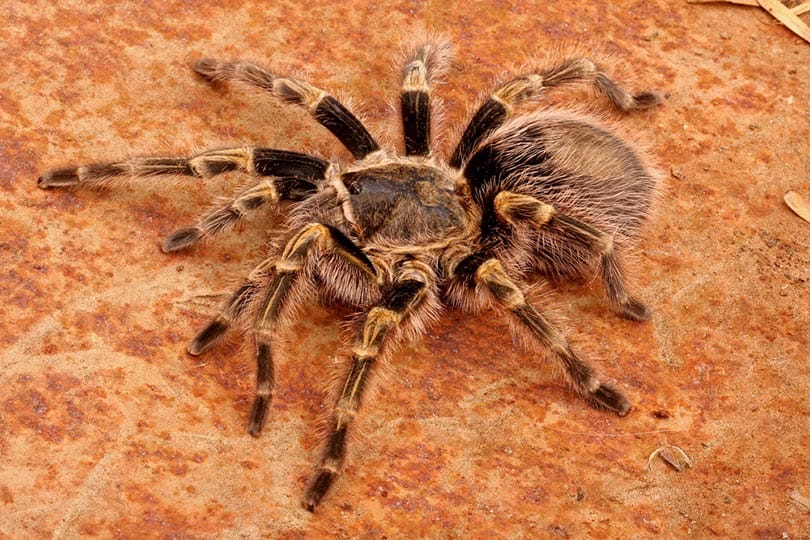
| Average leg span: | 7-8 inches |
| Native region: | Paraguay and Argentina |
| Dangerous? | No |
The Chaco Golden Knee Tarantula is one of the most docile tarantulas out there. They are only likely to bite if provoked, but the venom is not enough to be fatal. They are attractive tarantulas commonly kept as pets. They are unique because instead of living in the rainforests of South America, they take up residence in the grasslands. There are distinctive golden-yellow marks on their “knees” and pinkish hairs under the legs.
10. Brazilian Wandering Spider (Phoneutria nigriventer)
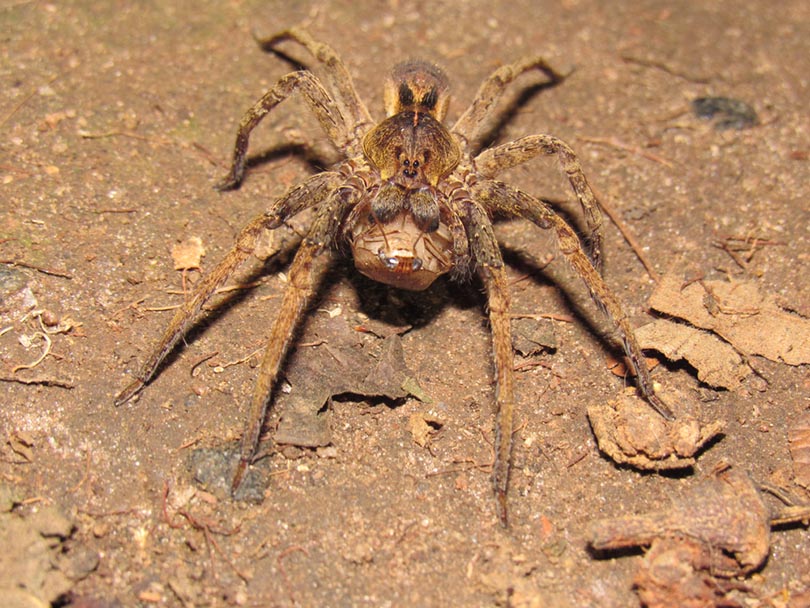
| Average leg span: | 5.9 inches |
| Native region: | Brazil |
| Dangerous? | Yes, absolutely avoid it |
The Brazilian Wandering Spider is not the largest, but likely the most dangerous spider on this list. They are not only aggressive but also extremely venomous. Instead of spinning webs, they wander around hunting for prey. They are also good at hiding in unexpected places and have snuck into fruit boxes delivered worldwide, including Texas and Essex.
The bite from a Brazilian Wandering Spider is known to kill a human within just two hours and cause an unpleasantly painful erection for victims with penises. Luckily, if you get to a doctor in time, there is an effective antidote that has prevented most deaths for years.
11. Cerbalus Aravaensis (Cerbalus araveansis)
| Average leg span: | 5.5 inches |
| Native region: | Arava Valley in Israel and Jordan |
| Dangerous? | Maybe |
These spiders take up residence in the sand dunes of the Arava Valley. Although it is hard to believe that any creature would choose such a hot and unappealing place to live, this spider makes dens in the sand and mostly comes out at night. Their venom has not been tested to determine exactly how dangerous it is.
Featured Image Credit: krzysztofniewolny, Pixabay
